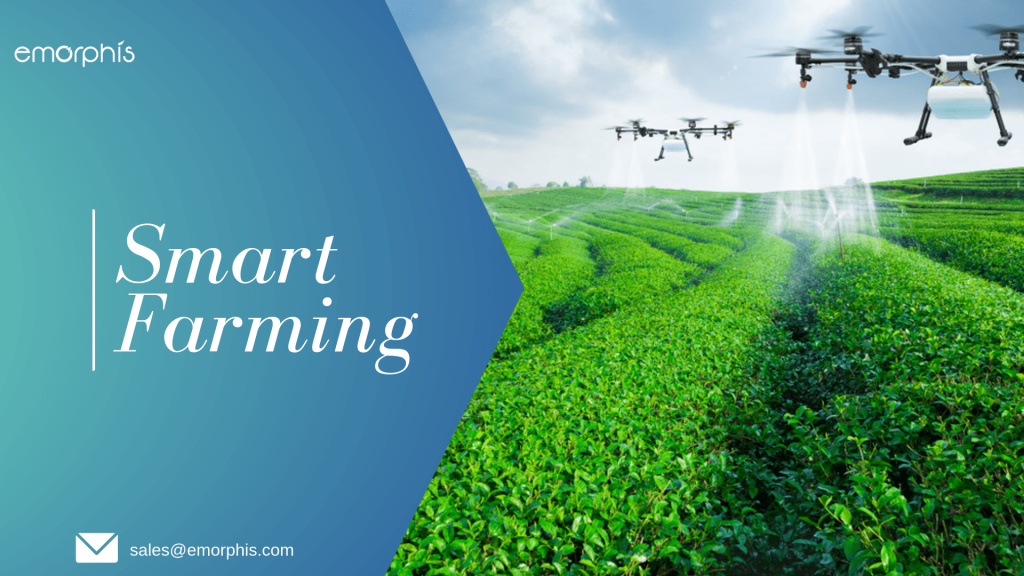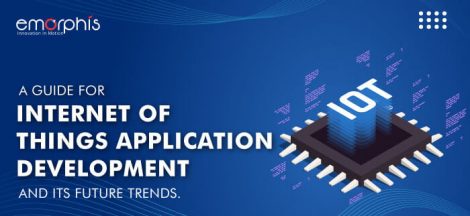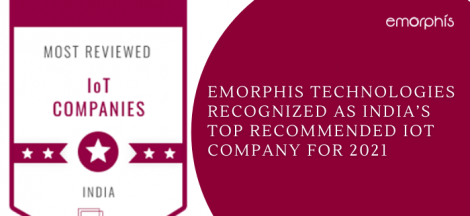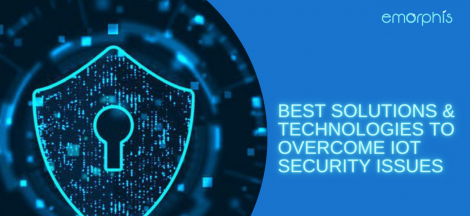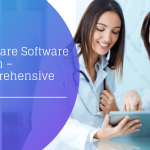Introduction:
Traditionally farming as a practice has been in the past and will continue in the future to be a manual and labor-intensive industry. With technologies such as Internet of Things (IoT), Big data & Analytics, Artificial Intelligence (AI) and Machine Learning (ML) touching almost all the listed industry sectors know. How can it no be the case for Agriculture and modern Internet and Communication Technology (ICT) to interact?
A small initiative in the 1990’s by John Deere Co. of using a GPS system in tractors linked to the satellite for automated steering the crop map reducing errors and hence increasing crop yield by reduction in wastage seeds, optimum utilization of fertilizers & manures, fuel and time made the way for a full-fledged industry.
According to a report published by Food and Agriculture Organization (FOA) of the United Nations, there are going to be 8.5 billion human beings on planet earth by 2030 and 9.6 billion inhabitants on earth by the year 2050. It is estimated that to feed this population, food production must increase by 70% considering limited agriculture land, scarcity of fresh water, and ever-changing climate conditions.
To address this challenge, efforts are in place to improve the quality and quantity of agriculture products by making them ‘Intelligent’ and ‘connected’ through “smart farming” also referred to as “precision farming”. Precision agriculture as an industry is poised to grow to 43.4 billion USD by end of 2025.
So, What Exactly is Smart Farming?
Smart farming can be referred to as the 4.0 green revolution in the field of agriculture combining agriculture methodologies with technology – Sensors & Actuators, Information and Communication Technology (ICT), Internet of Things (IoT), Robotics and Drones to achieve desired efficiencies of production with managed cost.
According to a survey, 80% of farmers in US and 24% farmers in UK have already started using Smart Farming Tool (SFT). These numbers are cognizant of the fact that SFTs are adding value to the farming ecosystem. As far as scale of operations is considered, Smart farming tools and techniques can be applied to large scale distributed conventional farming and can be applied to focused small farming set of organic farms.
Technology behind Smart Farming:
The structure of IoT is based on three layers; namely, the perception layer (sensing), the network layer (data transfer), and the application layer (data storage and manipulation). As the term
Layer 1: The perception layer
At the perception layer, we meet technologies such as WSN, RFID and, recently, Near Field communications (NFC). There is some overlap between WSN and RFID technologies, since semi-passive and active RFID tags can also be regarded as wireless nodes with lower computational and storage capacity. Typically, a wireless sensor node consists of a processing module, usually a low-power microcontroller unit (MCU), one or more sensor modules (embedded or external analogue or digital sensing devices) and an RF module, supporting a low-power wireless technology.
WSNs are often met in several works related to monitoring and climate control of storage and logistics facilities. RFID tags contain data in the form of the Electronic Product Code (EPC), and the RFID Readers are triggering, reading and manipulating many tags. Offering object identification, tracking and data storage on active or passive (without the need for embedded power supply) tags, RFID and NFC technologies play an important role in the agricultural domain. Typical user scenarios include products or livestock monitoring, supply chain and quality control tracking and lifecycle assessment of agriculture products.
Layer 2: The network layer
At the second layer of IoT, wireless sensor nodes interacting with physical objects and/or their environment, communicate with their neighboring nodes or a gateway, building networks through which the data are usually forwarded towards a remote infrastructure for storage, further analysis, processing and dissemination of the valuable knowledge that can be extracted.
Communication protocols built over wireless standards, facilitate the device networking and bridge the gap between the internet-enabled gateways and the end-nodes. Bluetooth Low Energy (BLE), LoRa/LoRaWAN, DASH7 and low-power WiFi have also appeared in several deployments recently.
Layer 3: The application layer
The application layer is the third layer of the IoT. It is of high importance and, in many ways, it is this that facilitates the realization of the IoT. The application layer faces several issues which must be resolved, such as the identification of the devices as unique entities.
Finally, for the sensed data to have a real value for the end-user or another system (in case of M2M scenarios) they must be stored, analyzed, synthesized and presented in an understandable and intuitive manner. Big Data is one side effect of the continuous data flow coming from billions of geo-distributed devices and has three dimensions, namely volume, variety and velocity.
WSAN (Wireless Sensor-Actor Network) paradigm, i.e. distributed smart devices sensing and transferring data to a sink and/or driving one or more actuators, moves one step further towards interoperability of devices and objects. Other aspects of IoT include technologies that support the intercommunication among devices and/or end-users, as well as the platforms, the software, the hardware abstractions and the programming tools, over which developers and providers can build new applications and services.
Precision Livestock Farming (PLF)
One smart subset to Smart farming is the Precision Livestock Farming (PLF). In this technology, sensors are used to determine reproduction cycles and monitoring health of livestock. Monitoring of data includes activity tracking, tissue resistivity, pulse and GPS location. Efforts are in place across the globe and especially in Europe to bring PLF capability from labs to ground zero. Similar application to the field of Smart fishing across Central and South-east Asia is also in place although at nascent stage.
Smart Farming Systems:
Through remote sensing precisely smart farming system reduces waste, improves productivity and enables improved resource management. For the benefit of micro farming, where multiple crops are grown simultaneously on remote lands requires different care, soil and water. By linking local sensors to smart irrigation and control, things like sensing pH balance of the soil, gauging local temperature is now possible through remote monitoring and sensing rather than walking the field all the time. This leads to increase in the yield as farmers can save on time and focus on the real issues of farming – pest control, irrigation and amending soil conditions all using sensing and automation.
Precision farming system has a lot of dependency on the software management systems. Control systems manage sensory input, delivering remote data for supply and decision support, as well as automation of machines and instruments for acting in response to rising problems and production support. Basically, it is a standardized business approach balancing the demand and supply side with respect to resource management.
On the supply side consider the supply of land, analyzing the conditions – moisture, pH, need for fertilizers.
During production, it is mostly resource management from a growth and yield perspective. For instance, precision seeding using automated tractors to reduce seed loss and seeding with proper space management between different plants. Another example is of precision water delivery.
On the demand side, it is about demand forecasting and delivering goods just in time to reduce waste.
The Real Purpose of Smart Farming:
The entire method from farm to table is software-managed and sensor-monitored, reducing overall prices, rising overall yield and quality of the availability, and ultimately the customer experience. It is true to state that agriculture is one of the oldest industries and practice for mankind. Here extrinsic factors such as weather, climatic conditions and generally environmental factors have decided for crop yield and production. With the help of ‘failure predictive systems’, concepts such as predictive analytics for crops and livestock can help in informed and data driven decision making.
Increasing consumer concern about food safety by the continuing sequence of food calamities, sometimes at large scale. Climatic conditions can be monitored and forecasted for better planning right from sowing seeds, growth phase and providing the final crop output to the customer.
Agri-food supply chains are characterized by complex network structures where many small and medium enterprises (farms and part of the processing industry) trade with huge multinationals in the input and retail sector. At this, agri-food products are often considered as commodities with cost-leadership as the dominant marketing strategy, resulting in low profit margin.
Sustainable food chains are becoming ‘license to deliver’: roughly one-third of food produced for human consumption is lost or wasted globally.
Automation and mechatronics have enabled huge steps forward in production efficiency, quality improvements and sustainability.
How the use of IoT in Agriculture augurs well for the Industry?
The Internet of Things (IoT) is very promising for realizing new levels of controls. It is expected to be a powerful driver that will transform farming and food into smart webs of connected objects that are context-sensitive and can be identified, sensed and controlled remotely. As such it is a firm belief that IoT will be a real game changer in agriculture and the overall food chain that drastically improves productivity and sustainability.
Here we cite three real world examples, showcasing innovation in agriculture IoT:
- Moocall: Wireless Calving Alert Sensors
A healthy calf from a healthy cow is better future guaranteed for cattle farmers. With the help of Moocall’s noninvasive wireless sensor can detect when a cow is going into active labor. The sensor is strapped to the tail, where it can monitor movement and record patterns of activity such as calving. Then Moocall uses the mobile network to send a text alert to the farmer, who should have about an hour to prepare for the arrival of the latest addition to the herd.
- Bosch: Asparagus farming sensors
The quality of asparagus depends heavily on the temperature of the ground in which it is grown. Farmers use a two-sided sheet of foil – the black side pulls in sunlight to increase the heat, and the white side reflects light to cool, this is done to control the temperature. The farmer needs to measure the temperature of every field at least once each evening, in order to make the right “black or white” decision. That’s where Bosch’s IoT system come in, sensors frequently measure the temperatures of the bed at different levels and stores the data in the cloud. Then this information plus additional analysis is accessible through a front-end interface, anywhere, anytime.
- TCS: Help for farmers to detect crop diseases
For the past two years, IT major TCS is running a pilot across a few villages in the states of UP and Punjab, agricultural experts can gauge the crop’s susceptibility basis soil and weather conditions. This is especially effective in gauging ‘Late Blight Disease’. The Agri-experts gather the information from a wireless sensor network spread across the farms and can determine the disease risk. Future is to introduce a mobile application that will involve farmers in disease detection.
Smart Farming Companies:
Farming is poised to be at the leading edge of new technology with the help of these companies:
RoboticsPlus – Fruit Picking Robots
Robotics Plus, a startup with 10 million USD in funding from Yamaha motor company is ready to push its Aporo bruise-free robotic packers into commercial production. The apple packer can identify and position apples in display trays and can carefully handle up to 120 pieces of fruit every minute, a function that takes the place of 2 to 3 migrant workers. Robotics Plus is also working on other autonomous agtech vehicles, like their robotic pollinator, a robotic crop-size estimator, and a robotic kiwifruit harvester.
ecorobotix – Weed Zapping Robots
Founded in 2011, Swiss startup ecoRobotix with a funding of 13.6 million USD from two rounds. Their most recent funding, a $7.6 million Series B round which closed in May of 2018, attracted European agrifood tech investor Cap Agro and the largest chemical producer in the world, Germany’s BASF.
ecoRobotix’s produces an autonomous robot weeder, run on solar energy, that can accurately detect weeds from crops using camera and sensors. Robotic arms are then used to apply a microdose of herbicide to the weeds it detects. Clearly, this reduces the amount of chemicals needed.
WaterBit – Smart Farming Irrigation Systems
Founded in 2015, Milpitas, California startup WaterBit with a funding of 11.4 million USD is in the process to build an Autonomous Irrigation Solution (AIS) to assist produce and nut farmers. The company’s product suite is composed of parts. The first, WaterBit Carbon, is a tiny solar-powered tool that connects the sensors and probes in your field to address water delivery at the micro level instead of a spray-and-pray approach. The second device is the WaterBit Block Value Controller which turns the irrigation system on and off based on input from the WaterBit Carbon device.
Trace Genomics
Launched in 2016, Trace Genomics is a highly scalable software and analytics platform that uses gene sequencing, artificial intelligence, and a growing database of microbial species to identify and profile the soil microbiome. It then provides actionable insights like how to achieve more efficient nutrient use, how to reduce input costs, how to reduce crop disease risk, and which seeds, rotations, or biological agents will work best. The company recently closed a $13 million Series A round, which is its first significant round of venture capital financing.
Smart Farming Techniques:
Following are the best in class techniques, used in smart farming –
Sensor based resource and field mapping:
With Sensor based resource and field mapping, the data collected from different sensors of various platforms with a wide range of spatiotemporal, radiometric and spectral resolutions has made remote sensing as the best source of data for large scale applications and study.
With the use of smartphones integrated with various sensors open new opportunities for rural farmers who previously had limited access to agricultural information and assistance from agricultural experts.
Remote equipment monitoring:
The monitoring equipment comprises of a communications controller/computer provided on the agricultural machine, one or more connections to the machine’s data buses and other controllers on the machine.
The controllers are connected to a machine data bus and to sensors which pass alert information derived from these sensors to the communications controller/computer which automatically generates and sends snapshot and summary reports to a central information server. This information is than passed on to the customer using application.
Remote crop monitoring:
Using remote sense data combined with selected field data helps determine key crop production indicators: crop acreage, yield and production, crop condition, cropping intensity, crop-planting proportion, total food availability, and the status and severity of droughts.
Predictive analytics for crop and livestock:
With the use of predictive analytics in agriculture, enables analyzation of historic data, present state to forecast analysis, and to make use of the data to predict the future and make decisions that impact the bottom line and end use of on-farm products.
Climate monitoring and forecasting:
Weather is one of the most significant factors for crop and livestock. Climate forecasts can be placed into two broad categories—statistical and physical. Statistical techniques rely on historical climate data to establish relationships between different time periods. A statistical climate prediction can be developed for summer temperatures based on winter temperatures. If winter temperatures are above normal, the odds for a warm summer increase. Physical prediction techniques rely on climate variations.
Livestock tracking and geofencing:
With livestock tracking solution, one can follow the movement of the livestock animals all over, this tracking is usually real time. These movements are collected by GPS tags that are carried by the animals and the administrator is notified every time the herd wanders in or out of the proximity.
Statistics on livestock feeding and produce:
With the use of GPS / RFID tags, not only the location of animals and herd can be tracked, but also important information related to animals such as calving, vaccination information, hormones, weight gain and loss, and medications. Statistics on livestock illness and overall performance to calculate and visualize the performance of individual animals or groups is provided.
Smart logistics and warehousing:
Smart logistics and warehousing increase the quality, quantity, sustainability, and cost effectiveness of agriculture production. It monitors and reports any deviation in the temperature based on threshold. The deviation also provides important information on duration and the locations. These systems have extensive usage in condition monitoring, reusable container monitoring, and food shipment monitoring.
Challenges with Smart Farming:
ICT technologies and IoT are rapidly changing smart farming and the overall food industry. They have the potential to bring in the future, through large scale deployments, huge benefits in the form of a more sustainable agriculture, ensuring food security with a lower environmental impact and guaranteed healthy food production.
However, reaping the full benefits will require overcoming certain IoT related challenges and barriers, both from technical and non-technical perspective. At the same time, these difficulties bring new opportunities for technological development and value creation considering different type of stakeholders.
From a technical perspective,
- Interoperability and Standardization
Proprietary architectures, platforms and standards represent a barrier for the wide adoption of IoT in the agri-food sector due to the risks associated to vendor lock-in, incompatibility with other systems, etc. One of the challenges in the agri-food sector is to properly capture its particularities in the definition of new global, open standards and the alignment with existing standardization initiatives from different stakeholders, stemming either from ICT or from agri-food that need to be continuously aligned. In farming and food applications, one must consider farm management and traceability systems, agricultural machinery information exchange (including fleet management), and in general the specific data lifecycle (generation, collection, aggregation, visualization).
- Enabling IoT devices
Many of the benefits promised by IoT, including continuous and fine-monitoring of parameters and variables, will only come through technological breakthroughs such as the increase of computational power enabling edge computing/analytics, together with the drastic decrease of energy consumption in sensors and actuators to become (almost) energy-autonomous devices. The large-scale scope of farming applications also claims for more intelligence in the devices deployed in the field, including self-configuration and self-management capabilities. In traceability and food safety scenarios there is a clear challenge in developing new and cost-effective sensors communication technologies, as for instance current biosensors, as well RFID and NFC tags are not always viable (compared to the cost of food product), in particular when targeting fine granularity, possibly at the individual product level. Further attention needs to be dedicated to the device characteristics, since food is considered as a commodity with low profit margin and short lifetimes. Compared to tangible products from other sectors (e.g. clothing, furniture, multimedia), direct pairing of IoT with fresh produce is rather impossible often-requiring additional packaging. IoT potentials are not necessarily directly transferrable to food and farm, asking for additional efforts and costs, assuring that enabling IoT devices will neither be harmful to environment, nor the consumers.
- Enabling Network, Cloud and Communications
Connectivity is essential for making the best out of the IoT. However, IoT intensive precision farming applications take place at food production (farms, aquaculture facility) which are in rural areas where broadband coverage is still far low. At the same time, agri-food is asking for IoT devices with a low power communication profile, even if this reduces bandwidth and communication frequency.
- Information Services
Generation and collection of data is just the beginning in IoT applications. Extracting value from the data, in the form of meaningful and actionable information for the users, is the final goal. In this regard, although there are already good application examples, information services in the agri-food domain are still in an incipient stage. Short-term developments are mostly aimed at decision support systems, based usually on rules engines. More advanced data analytics, for instance predictive modelling and production planning based on the demand (thus enabling demand-driven farming), are still a challenge in most agri-food applications. At this, object data has to be combined with a wealth of (3 party) archives such as historical and forecasted meteorological data, satellite data, soil, water and air-analyses, logistic systems, and data on prices, logistics, retail, food service, and consumers, diets, etc. In this context. the usability of the information services is also of high interest: farm management systems should be easily adaptable to holdings of different sizes, and with a low learning curve for the user, while facilitating interoperability for horizontal and vertical collaboration of business partners in the agri-food chain.
- Data Security
Farming and food chain are becoming more and more data-driven, so data here becomes a precious asset. Indeed, the data captured by farming machinery potentially conveys a large amount of information, which is critical to the farmers, such as soil fertility and crop yield, so farmers must have strong guarantees on the protection of their data, in particular in cases where such data is stored (and possibly processed) in cloud-based services. Therefore, many users are currently concerned with data ownership, privacy and security, which too often results in a lack of confidence and a ‘wait-and-see’ attitude. On the other hand, aggregation of data from different farms has the potential for generating huge added value. However, farmers must understand clearly the benefits they will get from such aggregation, as well as having the guarantee that their individual data is properly protected. In other words, Digital Rights Management solutions must be brought to the farming domain, for scenarios of data aggregation and data sharing. This will also facilitate a promotion of data initiatives for agri-food purposes as well as enabling an inter-sectorial collaboration. From a technical security perspective, there are additional challenges to be considered in the domain of trusted data: the integrity and authenticity of the data generated and stored must be guaranteed. In traceability/safety applications, this is relevant to the origin of the product as well as the processing in farming it is for in insurance-related issues. Trustworthiness requirements demand challenging solutions, such as low-cost authentication mechanisms for devices/machines. At the consumer side, security issues must do more with personal data, thus bringing privacy at stake. For instance, IoT applications related to personalized nutrition imply privacy challenges because of personal and behavioral data captured from wearables, smartphones, etc.
- IoT Platforms
There are numerous IoT platforms, stemming from open source initiatives as well as representing commercial IOT platforms. Besides the challenges with respect to governance, connectivity, fragmentation, interoperability, and stakeholders, it is emphasized that the need for decision support at the application level to capitalize on the IOT, requires a loosely coupled, modular software environment based on APIs to enable endpoint data collection and interaction. This is specifically true for small and medium sized companies representing the majority in farming as well as parts in the food chain. IoT empowered application might be enough to help solving a very particular problem. Applications could help process and interpret data and make suggestions or give advice. For example: Sensors in the field are measuring the conditions of the soil and consolidate this data in an app that is also predicting rain. Therefore, the farmer is advised against spraying his field that day.
From a non-technical perspective,
It is worth to mention other non-technical issues, which are crucial towards development of IoT agriculture application:
- Business model
Data driven value chainsopens the door for new disruptive business models in traditional sectors such as farming and food industries. However, the sustainability of IoT-based businesses, both for the supply side (providers of IoT technology) and demand (agri-food users) stakeholders must be investigated, specifically in the context of large-scale deployments. From an end user perspective, the quantifiable benefit and profitability must compensate for the cost of acquiring, operating and maintaining the IoT solutions. Upfront cost of acquiring the IoT platforms and services are currently a real barrier preventing wider adoption, by small-sized farms.
- Social aspect
IoT based solutions for the agri-food sector must prove their value massively to the users. IoT technologies enable to capture large amount of data nearly in real time. However, data must be beneficial to and useable for farmers and all the stakeholders across the food chain. The benefits of the technology must be brought to real farming scenarios; thus, dissemination and awareness are essential. An added difficulty in this regard is the heterogeneity of the agri-food value chain. In addition, to get the full benefits of IoT in farming applications it is essential that the users have certain digital skills.
- Policy and regulations
Policies play an important role in the widespread deployment of IoT-based innovations in farming and food chains. Such as:
3.1 Formulating clear security/privacy policies for protecting the farmer’s data from unauthorized disclosure and for controlled and secure access to the authorized third parties.
3.2 Supporting faster roll out of broadband internet access in rural areas.
3.3 Enhancing digital skills and inclusions.
- Stakeholder involvement
We observe the changing roles of old and new software suppliers in relation to IoT, big data and agri-food. The stakeholder network exhibits a high degree of dynamics with new players taking over the roles played by other players and the incumbents assuming new roles in relation to the agriculture data, information and knowledge. IoT also entails organizational issues of farming and the supply chain. Further technological development may likely result in two supply chain scenarios from a stakeholder perspective. One with further integration of the linear supply chain in which farmers become franchiser. Another scenario in which farmers are empowered by IoT and open collaboration. The latter would enable also small stakeholder to easily switch between suppliers, share data with government and participate in short supply chains rather than integrated long supply chains.
Conclusion:
The envisaged smart farming the coming years is not just a rudimentary vision, but a path for research, technological development and most importantly for innovation. New IoT based solutions that are making an optimal usage of digital devices and the virtual world in challenging as well as harsh environments are promising a huge impact for agri-food business, technology providers and finally for all of us as consumers.
Innovative solutions will pave the way helping to feed the global population. At the same time, consumers can become more aware of the overall agri-food chain that will help them to make informed decision when selecting specific produce. This can enable the opportunity to present consumers the full benefit of premium, organic and upcoming sustainable production methods as well as offer possibilities of better handling fair trade for farmers, hence facilitating their informed decisions.
The promising potentials of IoT technologies need to be based on an integrated usage of existing and mature methodologies and approaches that are already widely applied in the agri-food sector. Especially in precision agriculture, where traceability and food safety are cornerstones that are already part of the daily farm and food business practices. However, technology is still fragmented, and data-rich management practices are not yet sufficiently in place, hampering to achieve a full extent of a symbiotic farm and food systems that are aiming at a continued increase of yields as achieved in the years before by non-internet technologies.
At the same time, IoT can be the key enabler to handle issues in relation to climate change, animal welfare and contributing to a healthy lifestyle of consumers.
Therefore, the potentials of an Internet of food and farm can enable autonomous farm operations, demand-driven farming and production as well as providing a personalized nutrition also based on virtual food chains. This will require technological and non-technological advances, while related difficulties to bring new opportunities for technological development and value creation. On one hand, we need to work on data centric issues (e.g. interoperability, standardization, security, service creation), While also finding new solutions to classical problems of using IoT devices and wireless communication in harsh and rural environments On the other, heterogeneous types of stakeholders need to be empowered with the right digital skills, while policy and regulation have to be supportive in lowering barriers.
Finally, new and disruptive business models are in reach that will make use of the data-driven agri-food chain. However, the sustainability of IoT based businesses, both for the supply (providers Of IOT technology) and demand (agri-food users) stakeholders must be specifically in the Context of large-scale deployments for being able to mobilize a critical mass of end-users and validate the related benefits.



